When it comes to traveling, food is an integrated part.
Thanks to the great Kuma-gawa(球磨川, means Kuma river), Hitoyoshi has been famous for eel.
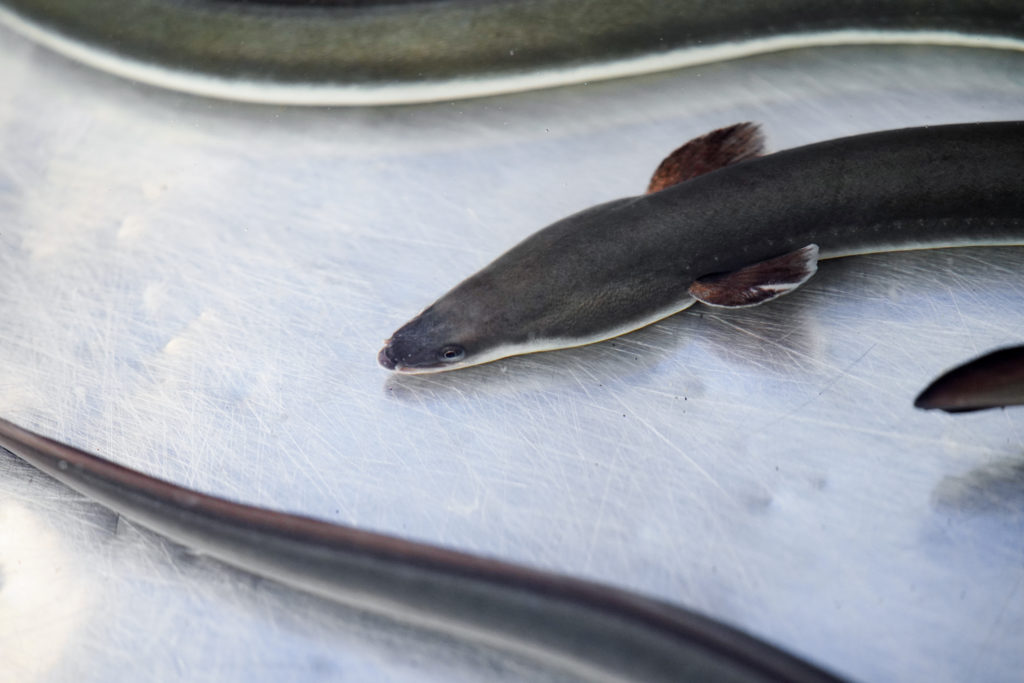
There are many grilled eel restaurants but Uemura unagiya(上村うなぎ屋, means Uemura eel restaurant) is the most famous eel restaurant in Hitoyoshi.
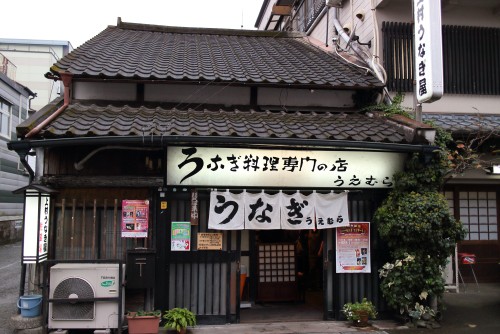
Let’s learn about when and why we eat eel and get to know Uemura unagiya!
Contents
Uemura unagiya(上村うなぎ屋)
When do we eat eel and why is it? Learn from interesting stories.
What is 土用の丑の日(Doyo no ushi no hi, the Midsummer Day of the Ox)?
We eat eel at any time of the year but we especially eat them on “土用の丑の日(Doyo no ushi no hi, translated to the Midsummer Day of the Ox)”. “土用(Doyo)” is the period of 18 or 19 days before the beginning of each season (spring, summer, autumn and winter).
At the time of seasonal changes, we are likely to fall sick.
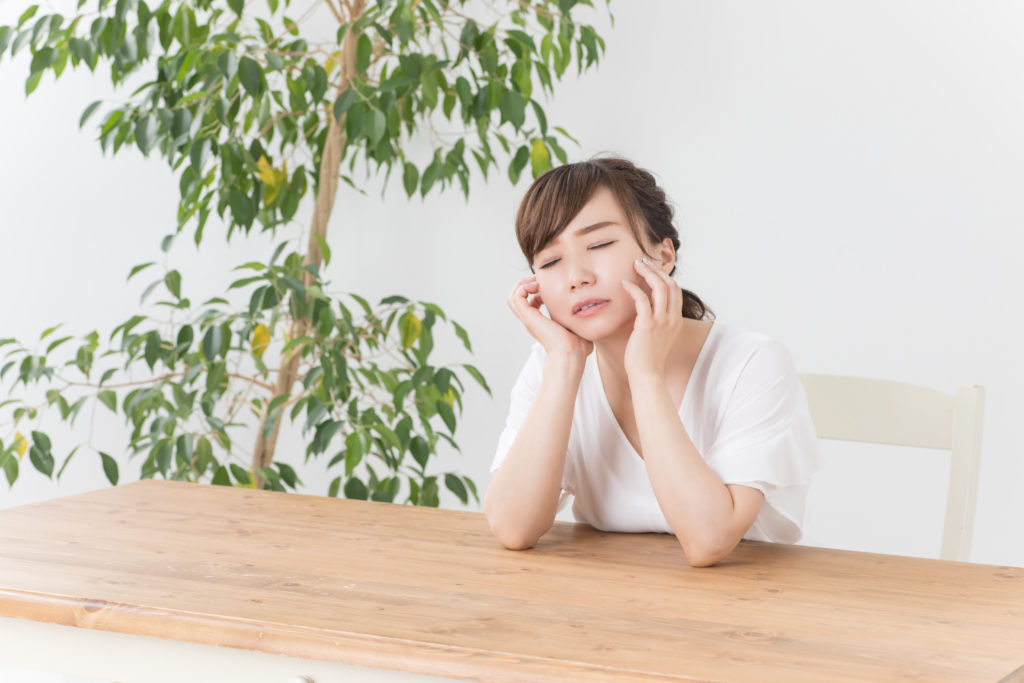
There is rainy season during summer Doyo and people take it more serious than other Doyo because more people tend to get sick during the time. Summer Doyo is especially called “土用の丑の日(Doyou no ushi no hi, translated to the Midsummer Day of the Ox) ”.
夏バテ(Natsu-bate, means summer fatigue) is a popular illness during summer. To prevent from it, we should eat well.
In Japan, it has been said that for summer fatigue, it’s good to eat food that name start with the sound of “う(u)”, such as 梅干し(Umeboshi, means sour plum), うどん(Udon, means udon noodle), うり(Uri, means melon) etc.
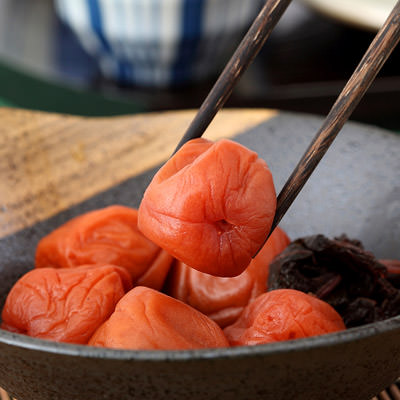
Source : https://www.nipponselect.com/shop/g/gS05230001/
And today’s topic “eel” is うなぎ(Unagi) in Japanese. Especially unagi has good effect of recovering from fatigue so people have chosen eel on the Midsummer Day of the Ox to get stamina.
Another interesting story about why we started to eat eel on the Midsummer Day of the Ox.
There is an episode about why we started to eat eel on the Midsummer Day of the Ox.
In 万葉集(Manyo-shu, which is an anthology of Japanese poetry in 8th century and translated as “a collection of ten-thousand leaves”.), there is a poem about eel.
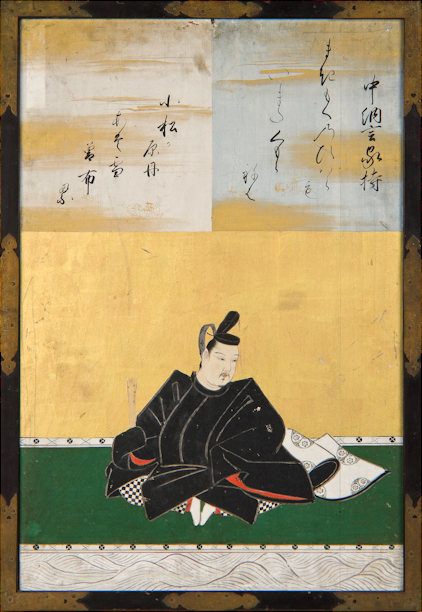
Source : https://ja.wikipedia.org/wiki/大伴家持
大伴家持(Otomo no Yakamochi), who was a poet, recommended to eat eel to his friend who lost wight and became sick because of summer fatigue. Otomo recommended him to eat eel. The friend ate eel and he regained his appetite and recovered completely.
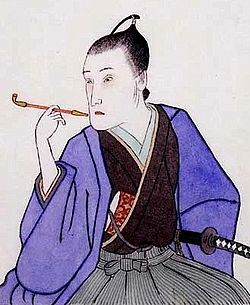
Source : https://ja.wikipedia.org/wiki/平賀源内
About 100 years later, 平賀源内(Gennai Hiraga), who was a doctor, a geologist, an inventor, a Dutch scholar etc. in Edo Tokyo, got to know this story and shared it to the owner of eel restaurant who was severely suffered with his financial difficulties.
Hiraga recommended him to make an advertisement saying “Today is Doyo no ushi no hi(the Midsummer Day of the Ox). Eat unagi and get stamina.”
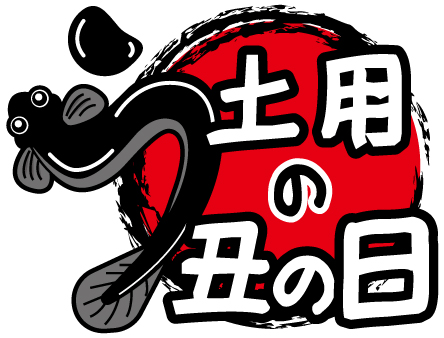
It had attracted people’s attention and his business skyrocketed.
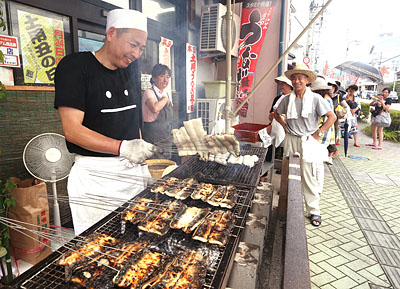
By the way, there is an interesting expression “うなぎのぼり(Unagi nobori)”.
“Unagi” means eel and “Nobori” means going up. “Unagi nobori” means something like numbers or costs increasing rapidly.
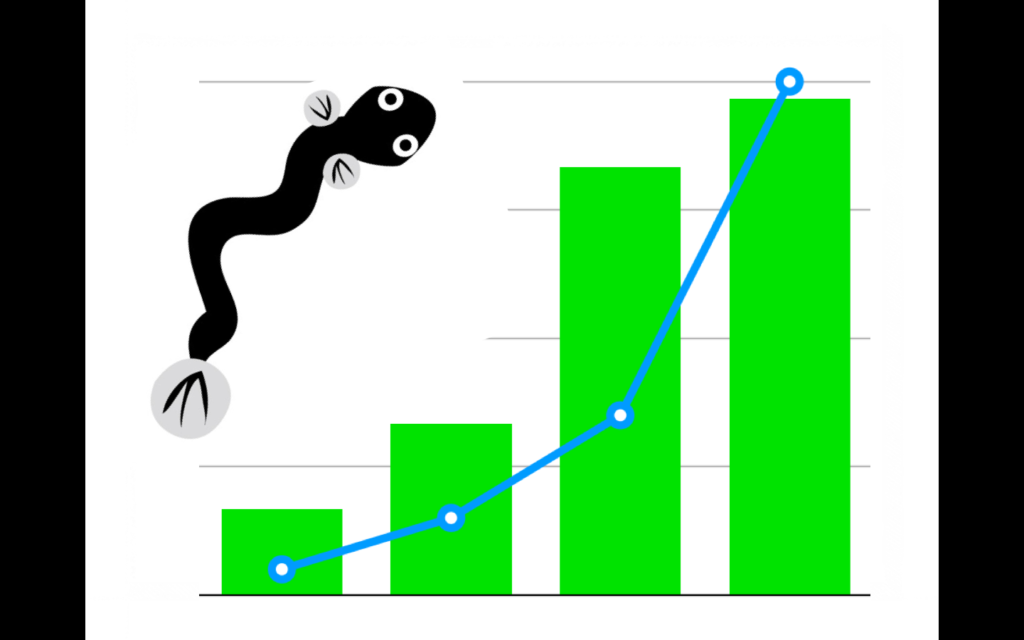
Unagi swims upward even in the difficult situation such as scarce of water, fast-flowing stream etc.
So the owner of the eel restaurant overcame the difficult situation and his business turned into “Unagi nobori”.
Learn about Uemura unagiya, which has been listed on the Michelin guide of Kumamoto and Oita 2018.
Uemura unagiya established more than 110 years ago.
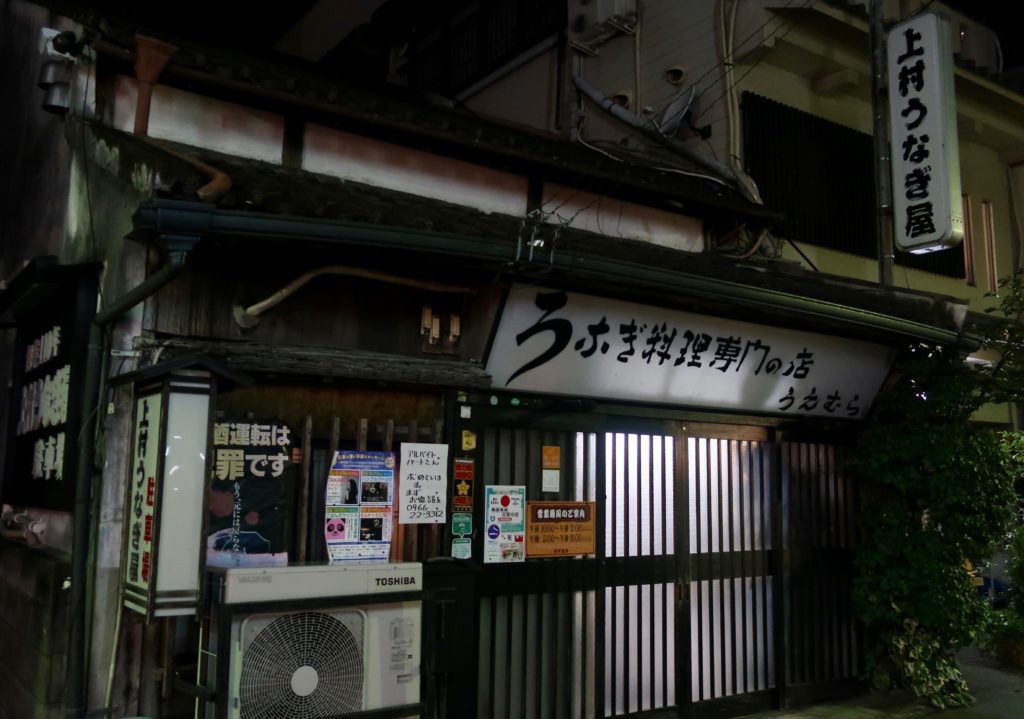
Not only the local but also people around Japan have visited Uemura unagiya to seek for the great eel dishes.
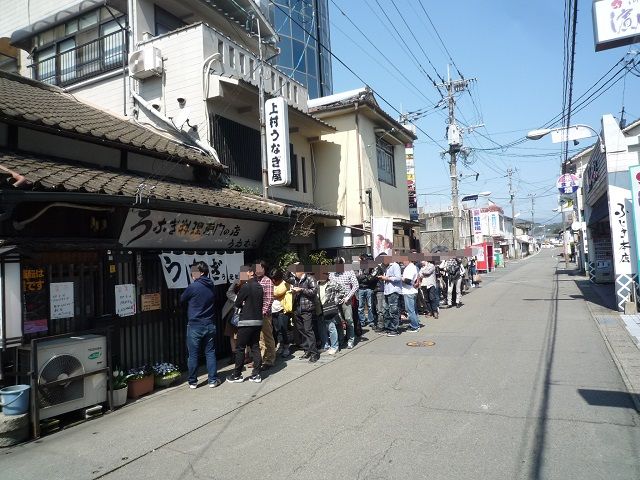
Because of this popularity, you should be prepared to wait in a long queue, especially during weekends and holidays. Some people posted that they had waited over 2 hours! We can’t book in advance so you should be patient and wait to be called.
Luckily, when we went there for dinner, we didn’t wait at all! We went there Saturday night and it seems like dinner time is less crowded.
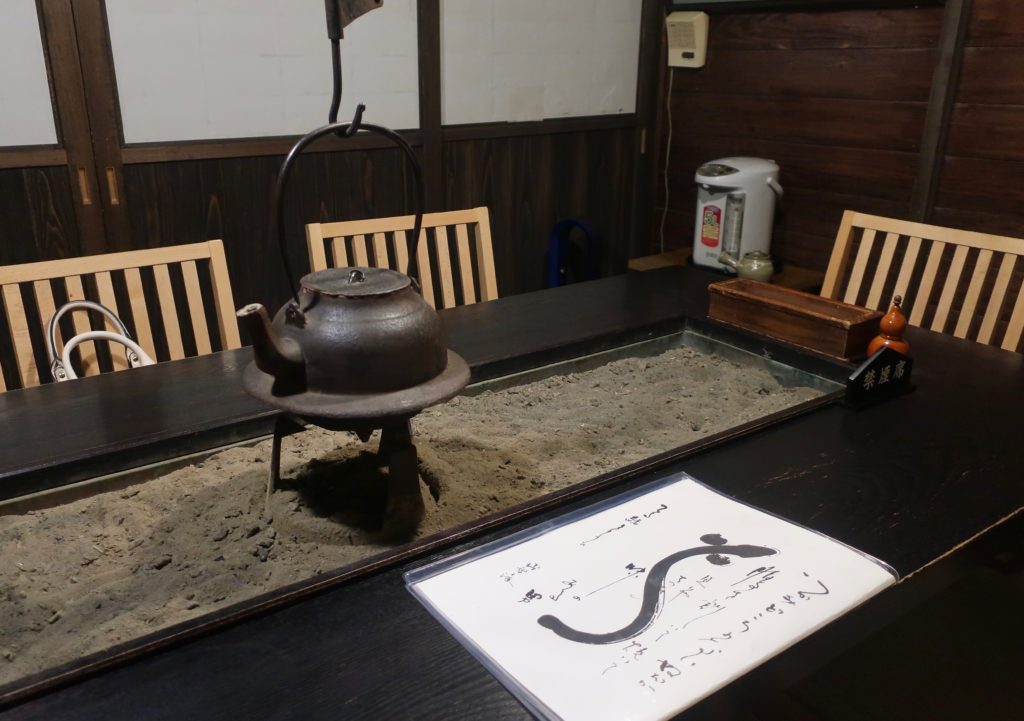
After you order, they pick one unagi from the fish tank and cut it alive into slices. Then they skewer them and grill them above the charcoal.
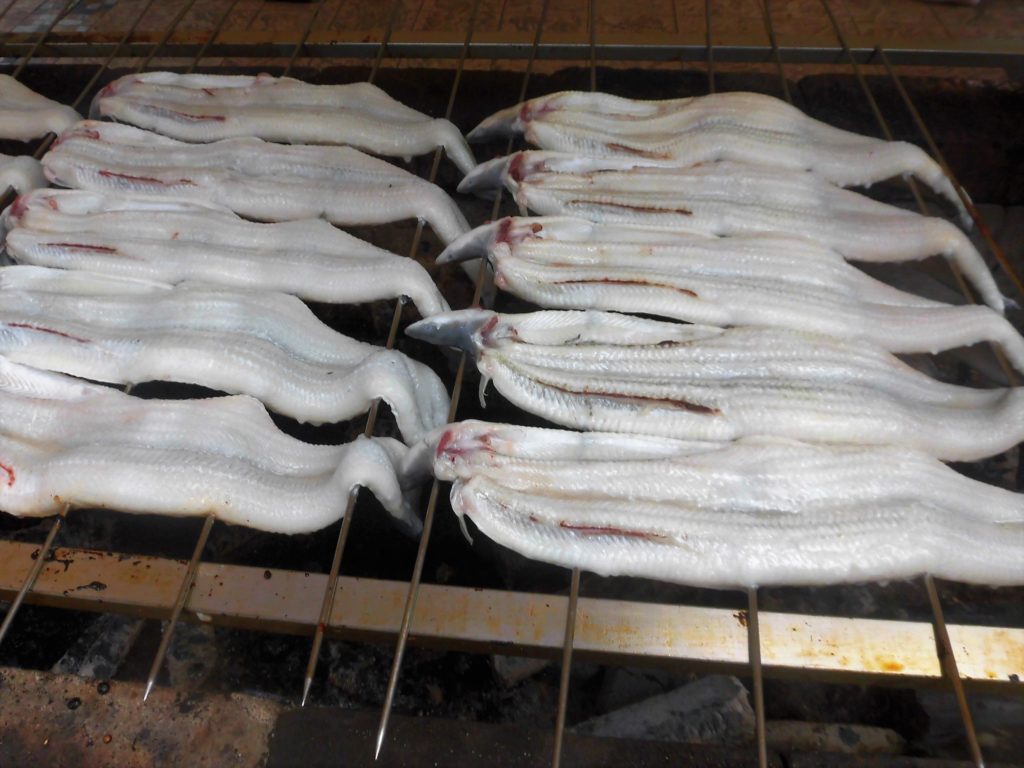
They use charcoal made from wood in Hitoyoshi area.
Because they cook fresh eel, it takes time to be served but I’m sure it’s worth it.
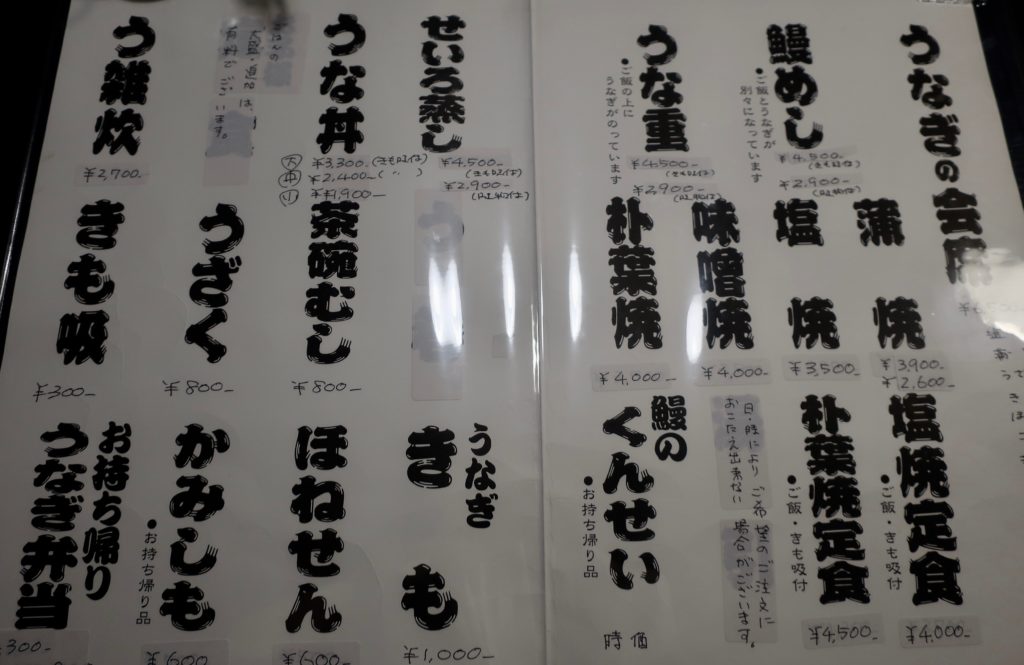
This is the menu and there is an English version, too.
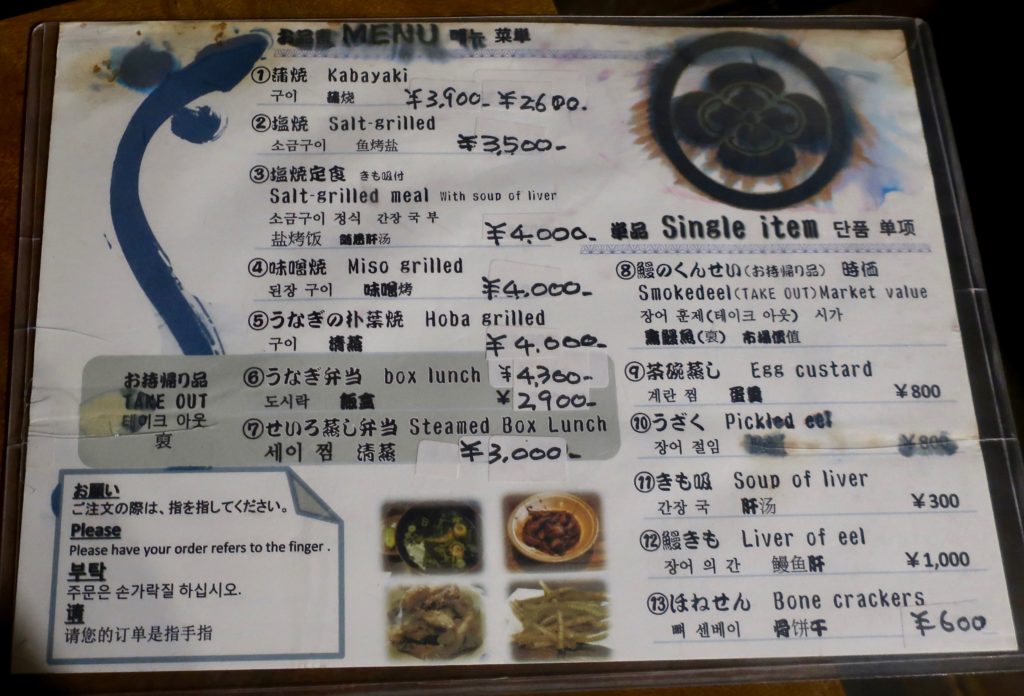
The most popular way of eating eel here is “蒲焼(Kabayaki)” which is “①” on the English menu. Kabayaki is grilled eel on rice with sweet thick soy sauce.
We ordered うな重(Una-ju) which is Kabayaki in a box.
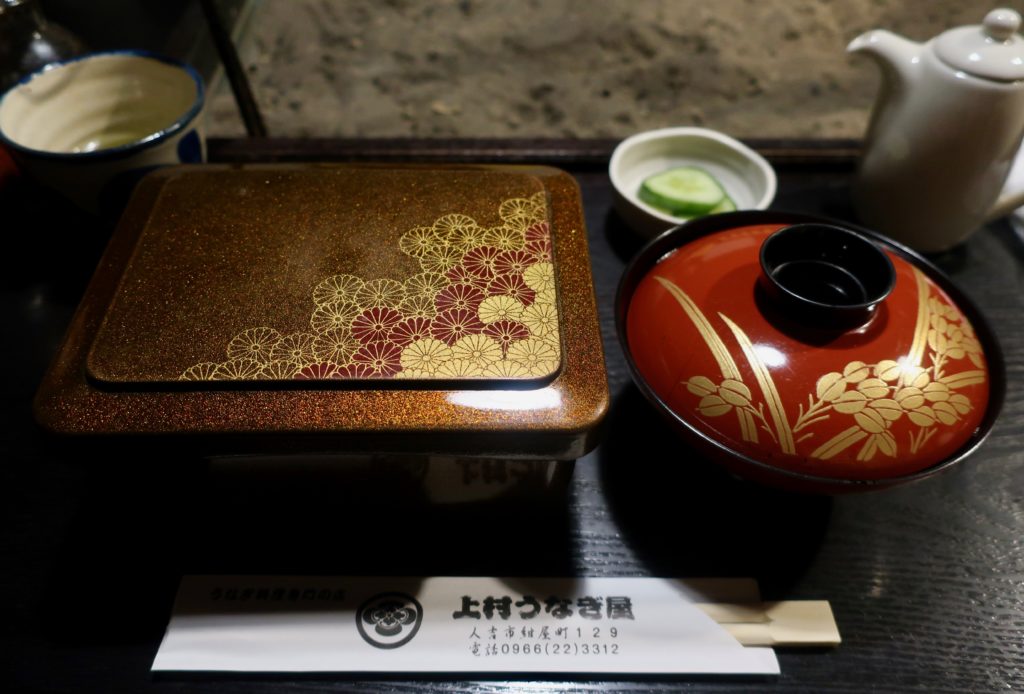
Una-ju is served with soup, pickle and a small jar containing sauce.
It’s so exciting to open it!
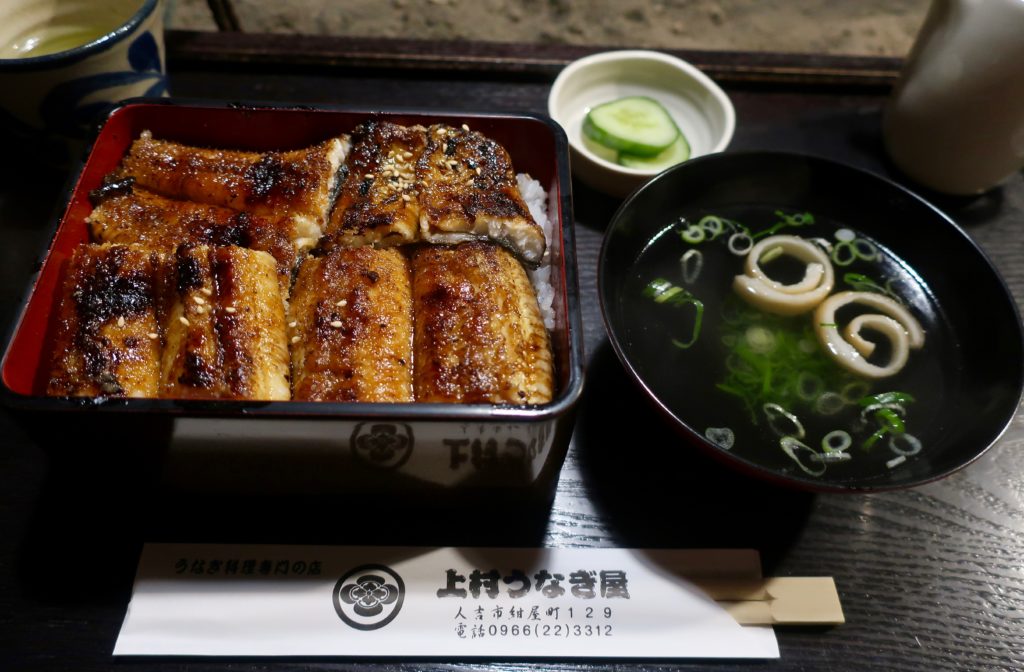
“Una-ju” has a few more eel slices than ordering “Kabayaki” (it seems like Una-ju is not on the English menu but you can show them the photo and order it.).
Since the eel is slightly seasoned with sweet thick soy sauce, you can pour more from the small jar(I love the sauce!).
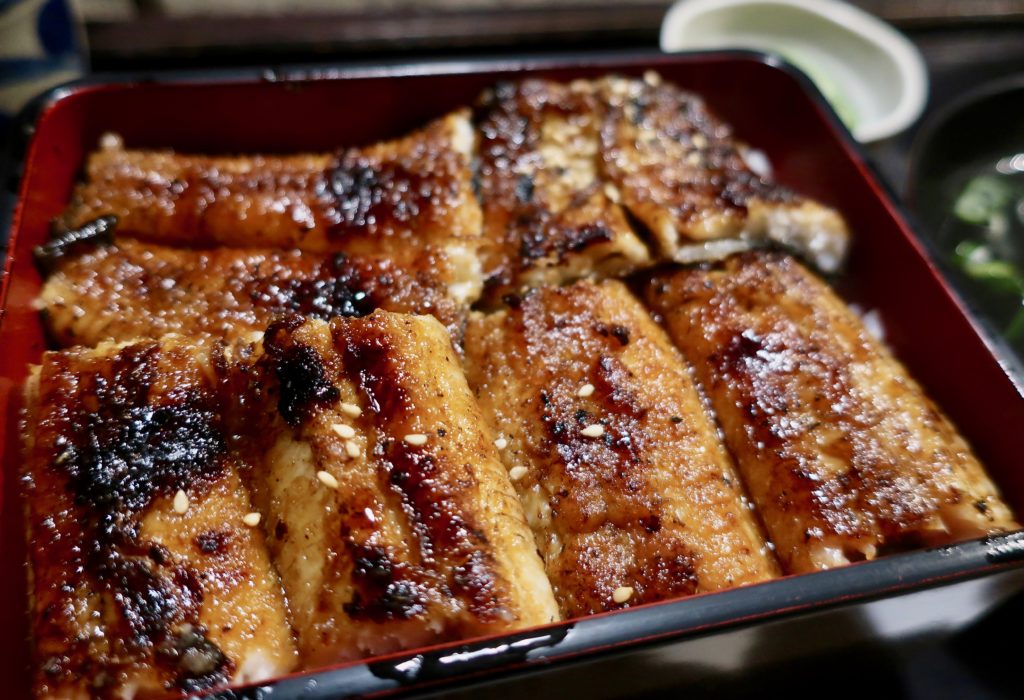
You’ll enjoy the smokiness of charcoal and sweetness of the lovely sauce. They use locally grown organic rice.
Unagi is one of my favorite dish so I was so happy in front of unagi and couldn’t help but smiling!
We were very excited to eat eel because eel is now expensive and luxury.
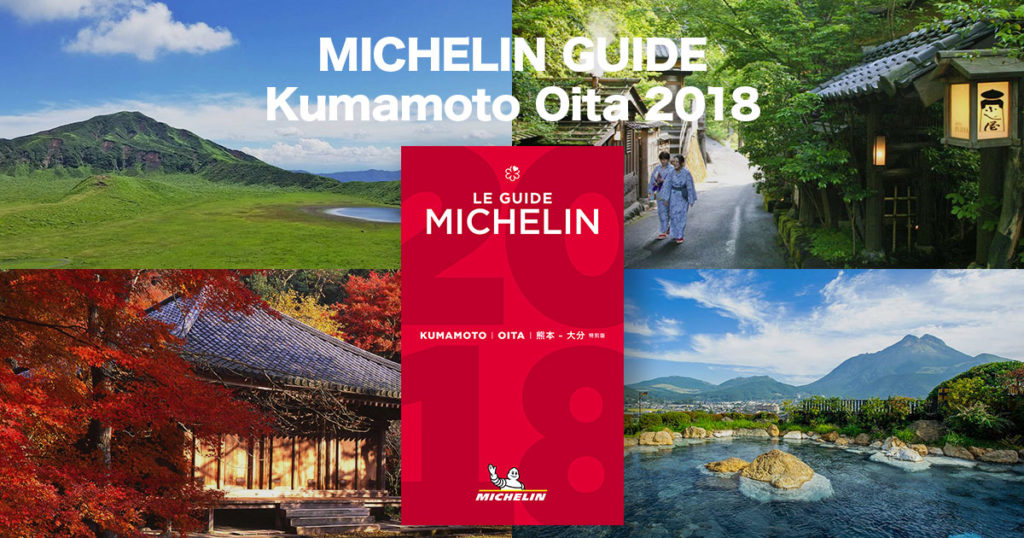
Uemura unagiya is listed on the Michlin guide of Kumamoto and Oita 2018. Now, they have many fans all around the world!
Visit Uemura unagiya in Hitoyoshi!
When you visit Hitoyoshi, Uemura unagiya is a must-visit place.
It can be a luxury lunch or dinner but I’m sure it’s worth it.
Get stamina by eating eel and survive this hot summer!
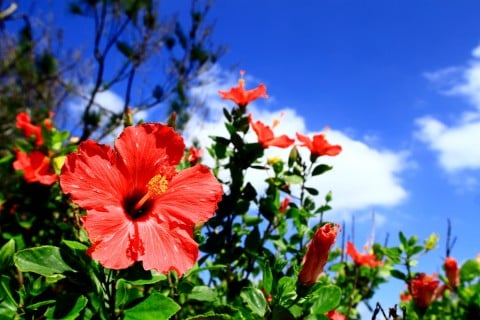
【Information and links】
Official website
English website(JR Kyushu)
https://www.jrkyushu.co.jp/english/railpass/coupon/kumamoto/1205121_3955.html
https://www.facebook.com/pages/上村うなぎ屋/125187880865822
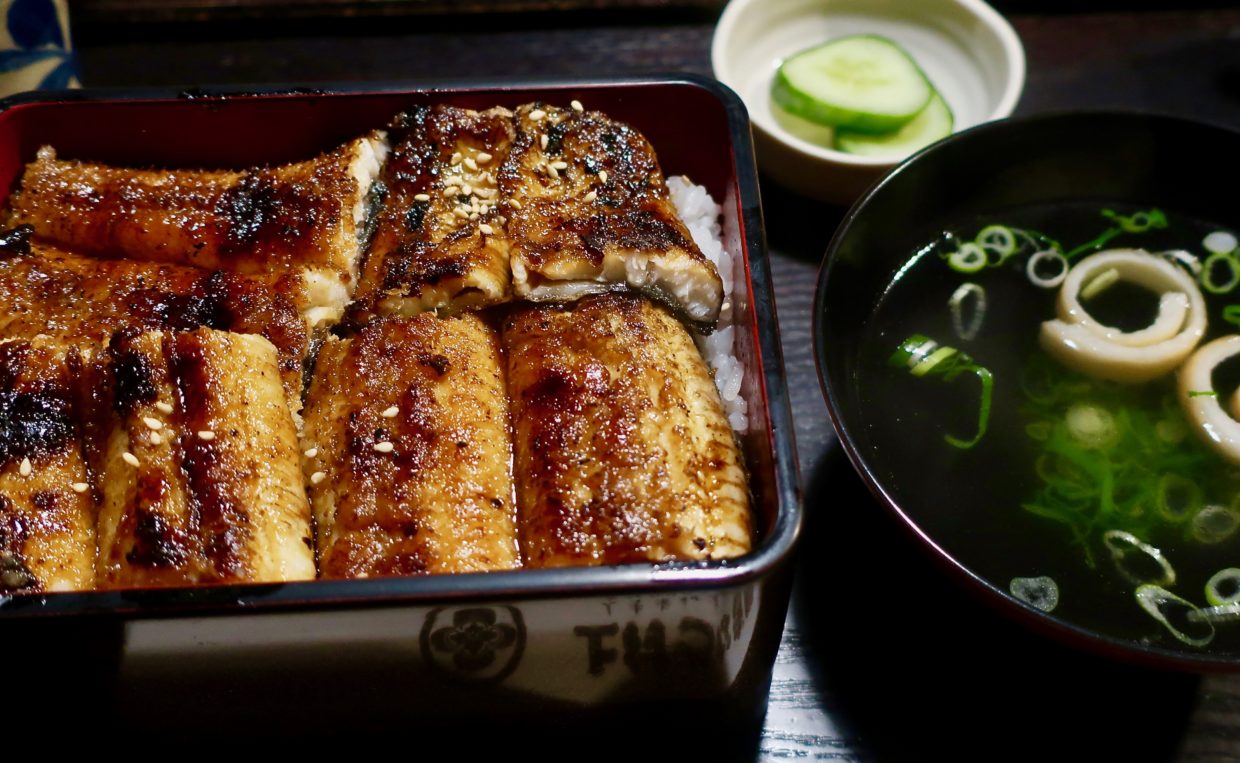
2 ピンバック